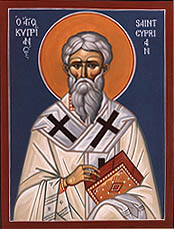Canonization
Canonization is the act by which a Christian Church declares a deceased person to be a saint, inscribing that person in the canon, or list, of recognized saints. Initially, individuals were recognized as saints without any formal process. However, since at least the 10th century, the process has become more formalized, with specific procedures in various Christian denominations, such as the Roman Catholic Church, the Eastern Orthodox Church, and the Anglican Communion. Canonization is a matter of ecclesiastical authority and not a precise science.
History[edit | edit source]
The practice of honoring holy people and recognizing them as saints dates back to the early Christian communities. Martyrs, due to their ultimate sacrifice for their faith, were among the first to be venerated. Over time, confessors—those who confessed their faith but were not martyred—were also recognized as saints. The process was initially informal, based on public acclaim and the consensus of the faithful.
By the Middle Ages, the Roman Catholic Church began to formalize the process to address the growing number of saint candidates and to prevent abuses. In 993, Ulrich of Augsburg was the first saint to be canonized by a pope, Pope John XV. The formal process continued to evolve, especially under the influence of the Counter-Reformation in the 16th century, which saw the establishment of the Congregation for the Causes of Saints by Pope Sixtus V in 1588.
Process in the Roman Catholic Church[edit | edit source]
The canonization process in the Roman Catholic Church is a lengthy and detailed one, involving several stages:
1. Servant of God: The process begins at the diocesan level after a waiting period (usually five years after the candidate's death, though this can be waived by the Pope). The bishop opens an investigation into the life of the deceased to determine if they lived their life with sufficient holiness and virtue worthy of recognition.
2. Venerable: If the Vatican's Congregation for the Causes of Saints approves the initial investigation, the Pope may declare the candidate "Venerable," recognizing their heroic virtue.
3. Blessed: For beatification, a miracle attributed to the candidate's intercession is usually required. Martyrs may be beatified without a miracle. Beatification grants the title "Blessed" and allows for limited public veneration.
4. Saint: Canonization requires a second miracle after beatification. Saints can be venerated by the entire Church.
Eastern Orthodox Church[edit | edit source]
The Eastern Orthodox Church also recognizes saints, often emphasizing the consensus of the faithful and local bishops in the recognition process. While there is no formal canonization process equivalent to that of the Roman Catholic Church, the Ecumenical Patriarchate or a synod of bishops typically makes official recognitions of sainthood.
Anglican Communion[edit | edit source]
The Anglican Communion venerates saints and has its own calendar of saints. However, it does not have a formal canonization process. Recognition of saints tends to be more decentralized, often based on local or national church traditions.
Criticism and Controversies[edit | edit source]
Canonization, especially its requirement for miracles, has been subject to criticism and controversy. Critics argue that the process can be slow, costly, and at times influenced by political or social factors rather than purely spiritual ones.
This article is a Christianity-related stub. You can help WikiMD by expanding it!
Search WikiMD
Ad.Tired of being Overweight? Try W8MD's physician weight loss program.
Semaglutide (Ozempic / Wegovy and Tirzepatide (Mounjaro / Zepbound) available.
Advertise on WikiMD
|
WikiMD's Wellness Encyclopedia |
| Let Food Be Thy Medicine Medicine Thy Food - Hippocrates |
Translate this page: - East Asian
中文,
日本,
한국어,
South Asian
हिन्दी,
தமிழ்,
తెలుగు,
Urdu,
ಕನ್ನಡ,
Southeast Asian
Indonesian,
Vietnamese,
Thai,
မြန်မာဘာသာ,
বাংলা
European
español,
Deutsch,
français,
Greek,
português do Brasil,
polski,
română,
русский,
Nederlands,
norsk,
svenska,
suomi,
Italian
Middle Eastern & African
عربى,
Turkish,
Persian,
Hebrew,
Afrikaans,
isiZulu,
Kiswahili,
Other
Bulgarian,
Hungarian,
Czech,
Swedish,
മലയാളം,
मराठी,
ਪੰਜਾਬੀ,
ગુજરાતી,
Portuguese,
Ukrainian
Medical Disclaimer: WikiMD is not a substitute for professional medical advice. The information on WikiMD is provided as an information resource only, may be incorrect, outdated or misleading, and is not to be used or relied on for any diagnostic or treatment purposes. Please consult your health care provider before making any healthcare decisions or for guidance about a specific medical condition. WikiMD expressly disclaims responsibility, and shall have no liability, for any damages, loss, injury, or liability whatsoever suffered as a result of your reliance on the information contained in this site. By visiting this site you agree to the foregoing terms and conditions, which may from time to time be changed or supplemented by WikiMD. If you do not agree to the foregoing terms and conditions, you should not enter or use this site. See full disclaimer.
Credits:Most images are courtesy of Wikimedia commons, and templates, categories Wikipedia, licensed under CC BY SA or similar.
Contributors: Prab R. Tumpati, MD



